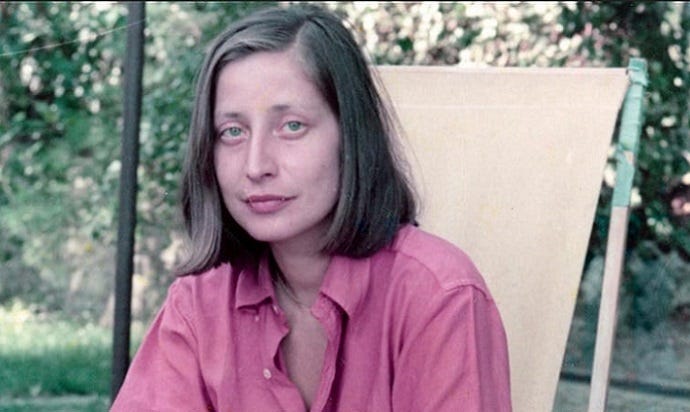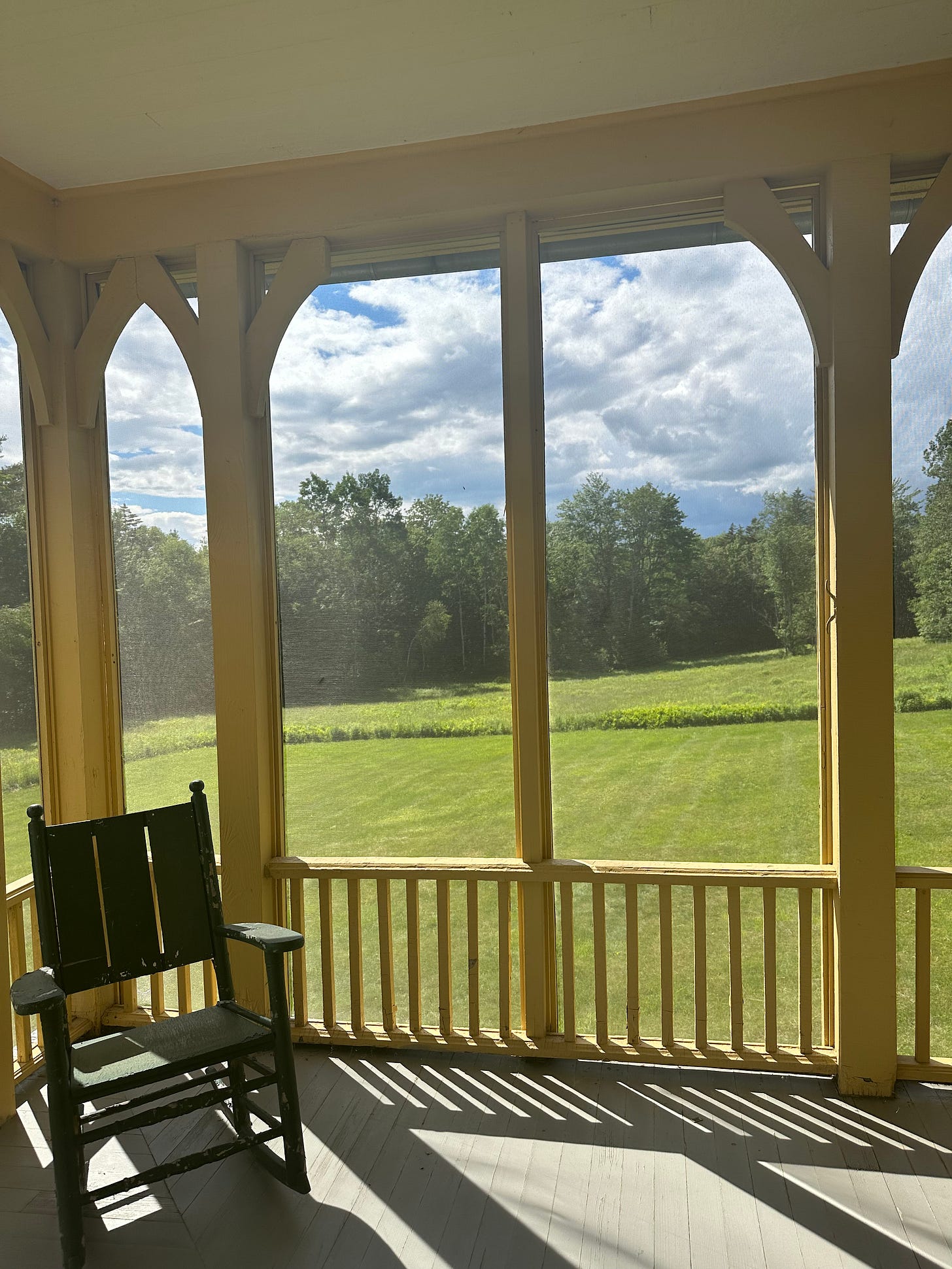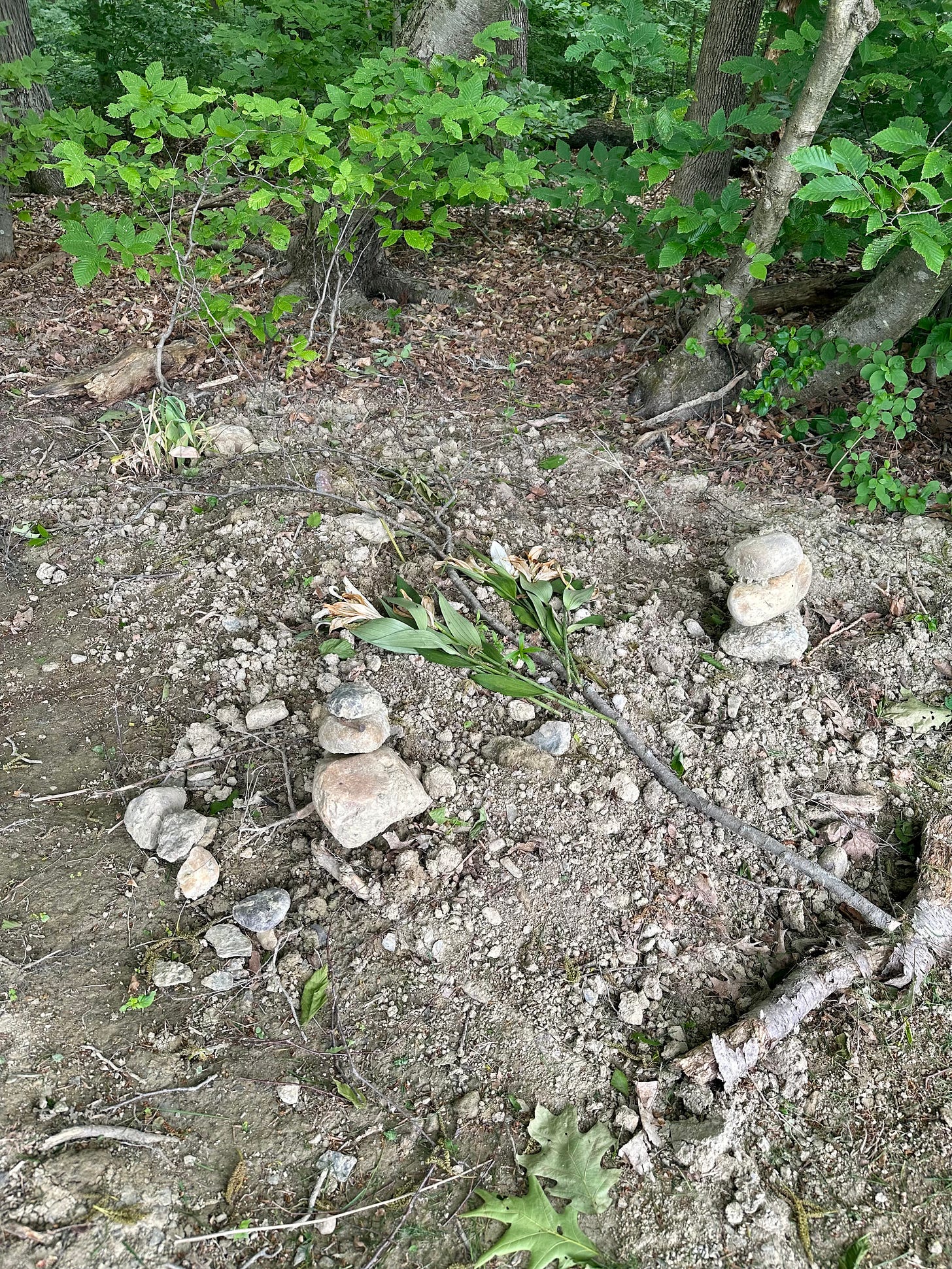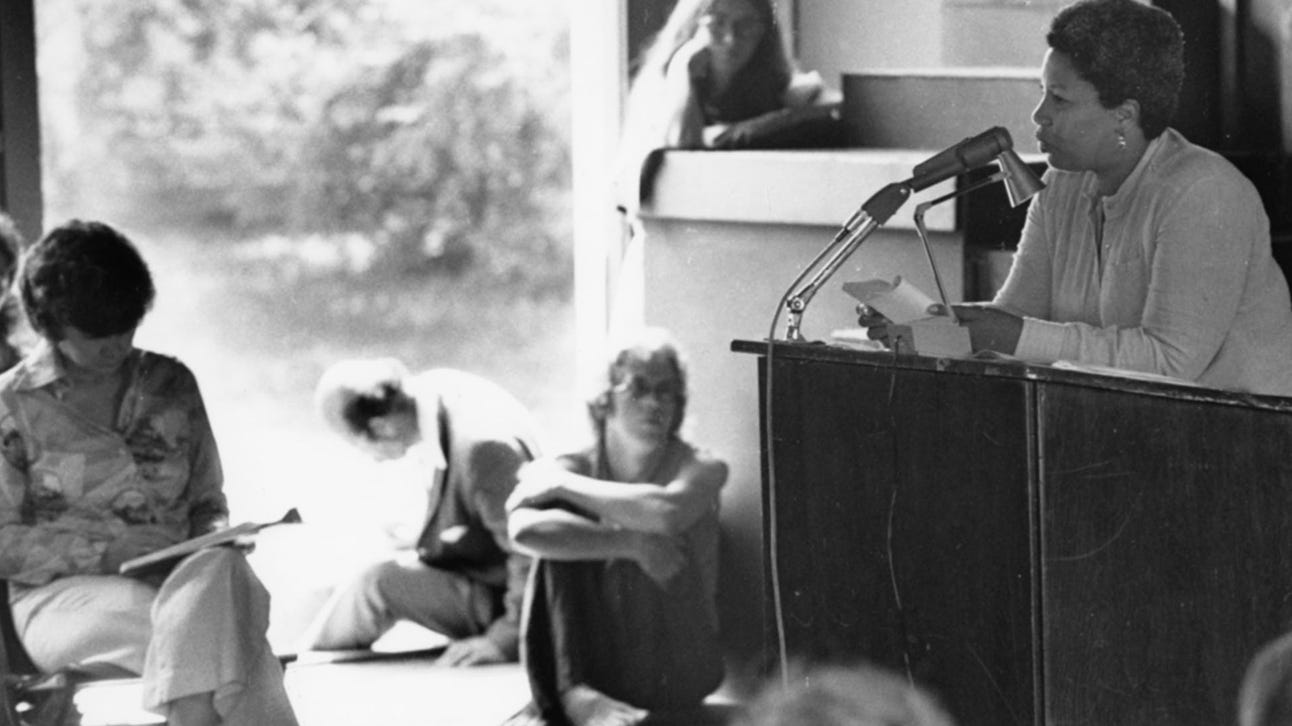I am often so frantic this time of year that I don’t actually visualize what coming to Bread Loaf will feel like until I begin to crest the last hill of the winding road in Ripton, nearing campus. Suddenly I begin to recall the green of the trees and the rich fields and dappled light and evenings in the Little Theater listening to literature that occasionally changes your life.
I’ve been many women on this mountain, coming to Bread Loaf first as a twenty-something scholar, then a fellow, then faculty, then the director of the Environmental Conference. I’ve been young and old, a student, a mother, a teacher, a mentor. I’ve come here alone; I’ve come here with children and partners. I’ve had different problems and books I was trying to solve. And I always walk the freshly mowed path through the fields, brooding, bird watching, thinking, dew seeping through my shoes.
Patrizia Cavalli
For most of my life, I have craved alone time, and each Bread Loaf session begins with a slow day, where people are filing in and I can hide away and write. I love the luxury of my inner life, of hearing myself think - until I miss the people I love - which reminds me of this poem by one of my favorite Italian writers Patrizia Cavalli:
Now that time seems all mine
and no one calls me for lunch or dinner,
now that I can stay to watch
how a cloud loosens and loses its color,
how a cat walks on the roof
in the immense luxury of a prowl, now
that what waits for me every day
is the unlimited length of a night
where there is no call and no longer a reason
to undress in a hurry to rest inside
the blinding sweetness of a body that waits for me,
now that the morning no longer has a beginning
and silently leaves me to my plans,
and all the cadences of my voice, now
suddenly I would like prison.
“Silently left to my plans” I am thinking and writing well here in my cold cottage, missing my prisons, wrapped in blankets and a cashmere scarf in June, eating a bowl of cherries, drinking coffee. My hair has smelled like one of my favorite writers all morning, after I hugged Helen MacDonald over coffee earlier. Surely smelling like Helen is an auspicious start for a writing day.
I just returned from reading and teaching at the Adirondack Writers’ Conference, where I taught in a tuberculosis museum (!) and read from my book in progress for the first time, on the International Sweethearts of Rhythm. I was moved while reading, and moved by the reception to the passage I read. Only other writers, I think, will understand the relief in that - of watching your material land on a crowd of readers for the first time.
This week it’s nice to feel steeped in the work I love, to be in community, to be in a generative moment.
Bread Loaf fields, looking upwards towards the inn between storms
*
I walk constantly, not as much for exercise as for mental health, and recently I came upon an open hole in the ground in the fields near home. The hole was grave-sized, and I took a picture (I listen to too much true crime and have a Nancy Drew complex - I wanted to document this grave-in-progress).
The human-sized hole was indeed a grave, and as weeks have gone by a woman was buried there, and stones have been piled and lilies left on the freshly overturned dirt. I knew of this woman, and encountered her once near the end of her life. She was walking her dog as I was on a run. A thunderstorm was moving in near us and I was eager to finish my loop before it hit directly. I had a feeling this woman was in trouble and I stopped to speak to her - only to realize she was deep in a memory-loss episode and disoriented. She told me to call her son on the phone and handed me a television remote she had stashed away in the pocket of her jeans. We talked and I tried to gather clues about who she was and where home might be. When her nurse finally drove by, the woman was confused and turned to me to say: I’m staying with you. We’d been walking in the rain for twenty minutes and the storm clouds were coming in overhead and her dog was anxious. It was a vulnerable moment to witness and has stayed with me, and I nod to her grave now and admire the way it overlooks the fields she loved.
I do not know where I’d like to be buried, and this troubles me. It seems, in the spirit of this substack, as the ultimate connection to place. I have many places which I love and few which feel like mine to claim.
The other week I lingered over a surprising article about the end of life - scientists who are studying the mysteries of brain activity as life ends in a human body. There seems to be a death of the body, which may not entirely sync up with the death of the animating electrical experience of life itself in the brain center.
“To die is such an essential part of life,” the scientist says in the piece. “But we knew almost nothing about the dying brain.” The article continues:
In the 1970s, a small network of cardiologists, psychiatrists, medical sociologists and social psychologists in North America and Europe began investigating whether near-death experiences proved that dying is not the end of being, and that consciousness can exist independently of the brain. The field of near-death studies was born.
Dying is not the end of being. An idea for your consideration.
Last week I was walking the fields and showed the natural grave to a brilliant friend who is an ivy-league trained scientist prone to doing adventurous fossil fieldwork which requires renting helicopters (and she will roll her eyes if I mention that fact in public). She told me about seeing a sign recently at the Bridge of Flowers in Shelburne Falls which had asked visitors to stop spreading the ashes of loved ones, as it was detrimental to soil and water. The Bridge said, via social media:
An ongoing problem on the Bridge of Flowers is the damage done to plants by human and pet ashes. While it might be a beautiful location for a loved one the ashes are actually killing the plants. Ashes are very alkaline and contain salts which kill the leaves first and then the roots. Please pass this information for others who might need to know. Ashes have no place in a garden.
Apparently cremation is not an environmentally friendly practice and our ashes are toxic. (Do you have burial plans connected to place?)
I recently learned that your ashes can be mixed with concrete so you can be added to a coral reef. That idea sort of delights me - strangely beautiful. Again: dying is not the end of being. I think that’s an idea many artists understand, or hope for. Like Oscar Wilde said: all art is immortal. (I hope that’s true for everything I wrote after I turned 30, and nothing before).
Toni Morrison at Bread Loaf
I feel that here at Bread Loaf - there are so many ghosts on this mountain. Since 1926: writers writing, writers in love, writers in crisis, writers with vices.
It is raining again here and someone is ringing the old metal bell letting me know it’s time to move along.
For now -
xo
M






Just wow, as always. So much rich food for thought (and some beautiful ennui!).
This spoke to me in so many ways. Thank you for your brilliant writing and raw honesty.